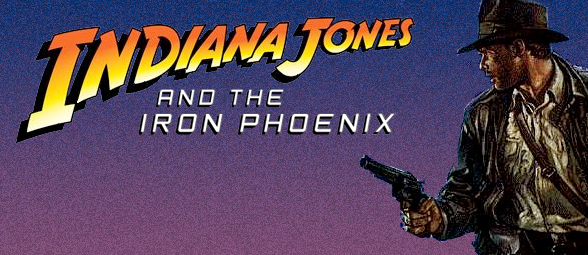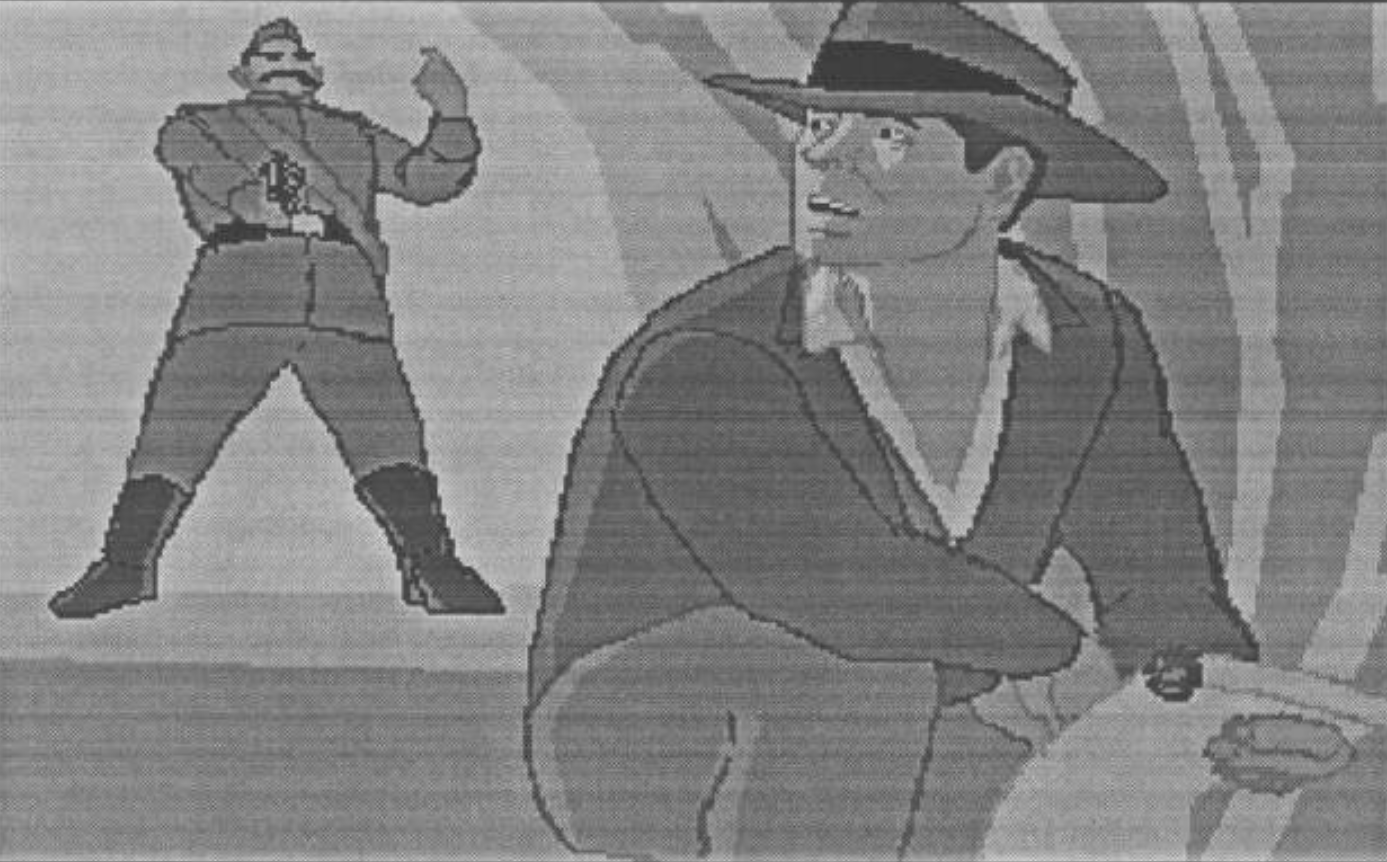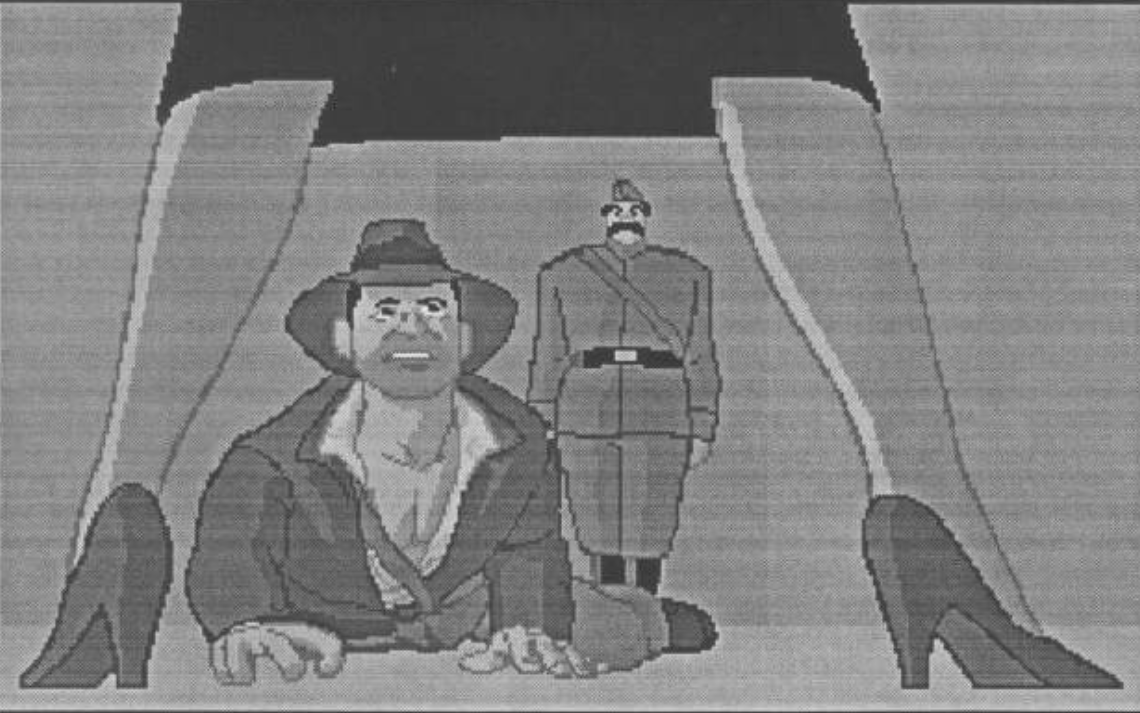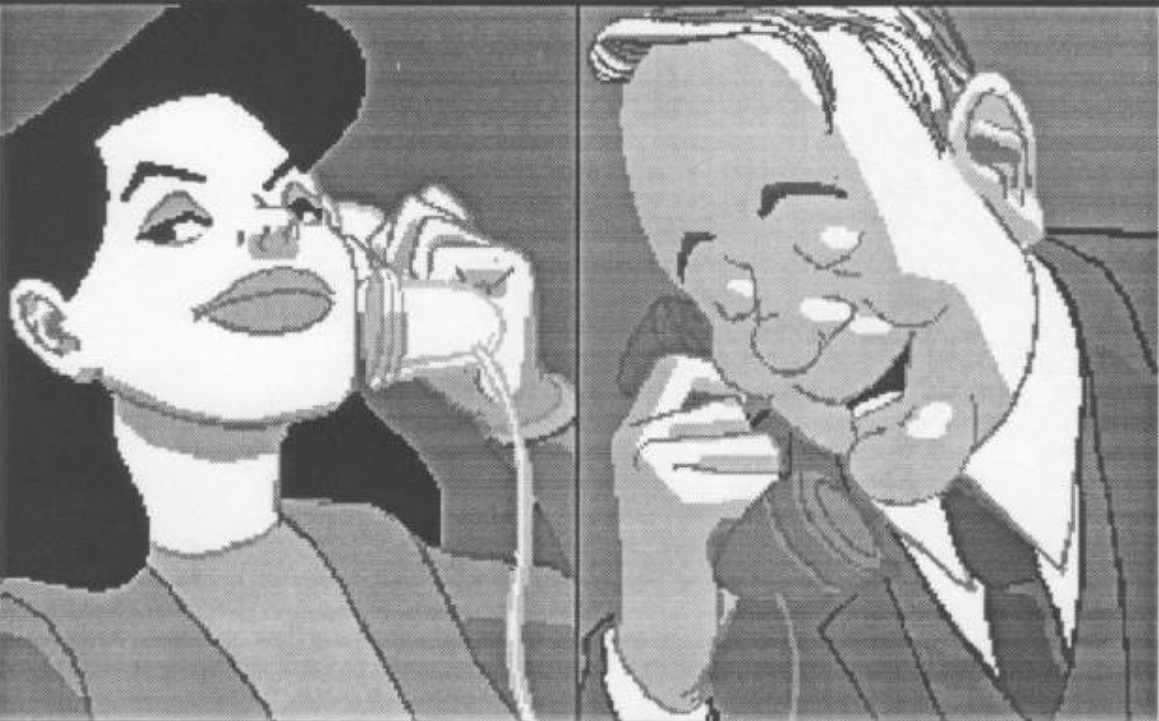- Page 1 After Fate of Atlantis
- Page 2 A Post-War Indy
- Page 3 Design Interrupted
- Page 4 Programmers and Palettes Stretched Thin
- Page 5 Blame Canada
- Page 6 "Our situation has not improved."
- Page 7 A Comic Consolation Prize
- Page 8 "It belongs in a museum!"
- Page 9 Resources, Sources, and Thanks
- Page 10 But wait! There's more.
Articles

Indiana Jones and the Iron Phoenix: The Lost Sequel to Fate of Atlantis "Our situation has not improved."
This ineffective collaboration with the international team dragged on painfully for six to eight months, sapping resources and putting the game behind schedule, no doubt making it an unpopular project with management. Eventually and inevitably, ties with Montreal were severed and Wilmunder, disillusioned, turned his focus toward The Dig. Iron Phoenix’s days were numbered. Still, as long as the project had a pulse Wilmunder would do what he could to problem solve, and he began to explore alternative strategies for getting the animation done.

While noting that he was not part of such discussions (being assigned to and from Iron Phoenix as needs fluctuated), Anson Jew recalls a rumor that rotoscoping was considered. Rotoscoping is an animation technique in which character actions are performed by live action actors, after which animators paint over a projection of the frames. The technique had been employed on Fate of Atlantis for certain animations, with Steve Purcell standing in for Indy and his fellow animator and future wife Colette Michaud being the reference for Sophia Hapgood.
According to Wilmunder, what he proposed was even more radical: Pure live action performances.
Phoenix had some life even when I shifted priorities to The Dig. The video shoot was done after we ended the relationship with the team from Montreal. The art department was very interested in experimenting with live-action video and a number of parts of Phoenix had been storyboarded as if it would be filmed. Bill had done creature effects on ’The Fly’ and used storyboarding to convey his work on that film. I was involved in the shoot more as a consultant or adviser to explain the shot, the action required, and at times the motivation. Bill and I prepared a list of scenes that we thought would benefit most from using video. I think that Tamlynn Niglio did the casting and the video was shot in 2 days at ILM. Once the video was complete, the art department integrated the live-action footage with Bill’s backgrounds. I wish I had copies of that footage, since this showed what Iron Phoenix could have really been, an amazing cross between adventure game and live cinema. I think that what was learned from this effort went on to benefit projects like Rebel Assault II the following year.
- Aric Wilmunder

There was never a chance to move forward with this technique beyond these tests, however, because there was yet more bad news awaiting the project. This time it had to do with the game’s marketability. According to Hal Barwood, the problem was defined when LucasArts showcased the game at the European Computer Trade Show (a now defunct industry event which ran from 1988-2004).
Some history is required. Following World War II, Germany enacted strict laws that banned the display of Nazi imagery, such as the swastika, in public or on merchandise. Exceptions included depictions in historical contexts or in artistic works. This protected movies, but under the arcane definitions of these laws, video games are considered "toys" and are subject to the ban.

A useful example of a workaround is Indiana Jones and the Staff of Kings from 2009. In that case, the modifications made to satisfy German law were applied in all territories (probably for simplicity’s sake) and to frankly comic effect -- despite a storyline featuring Nazis, Indy pointedly only ever refers to his nemeses as “Germans” in-game, and all swastikas are replaced with iron crosses. No such tap-dancing was possible with Iron Phoenix, however, as the game’s story was literally about resurrecting Hitler to bring the Nazis back into power. LucasArts was stuck.

It can't be overstated how critical European markets - Germany in particular - were and are to the viability of an adventure game release. The genre has always been niche, and some of its most reliable customers are overseas. Even the bonafide classic The Secret of Monkey Island, released during a supposed golden age for the genre, relied on those international sales to break even, much less qualify the game as a hit that merited a sequel.

Deprived of a market so fiercely depended upon, LucasArts probably had a hard time continuing to see Iron Phoenix as having much profit potential in a world where digital distribution was a decade away from mainstream acceptance. Aric remembers the event less specifically as the bombshell Barwood does, but agrees it may have been the final straw:
I don’t have any recollections about it being a trade show or simply our German vendor letting us know that they would not be able to sell a game that had any reference to Hitler. At the time, our German sales revenues were higher than our domestic revenue, so this market was very important. I remember that with the Indy games, we would have the artists go through the German version and remove the swastikas and replace them with iron crosses, which were OK. Technically the games could be sold, but effectively under the counter. They couldn’t do displays or advertise the products. After months of trying to get anything resembling decent artwork out of the development team in Montreal, this was just the last nail in the project’s coffin. The only highlight was that about this time Dark Horse Comics picked up the story to do as a 4-series comic book.
- Aric Wilmunder